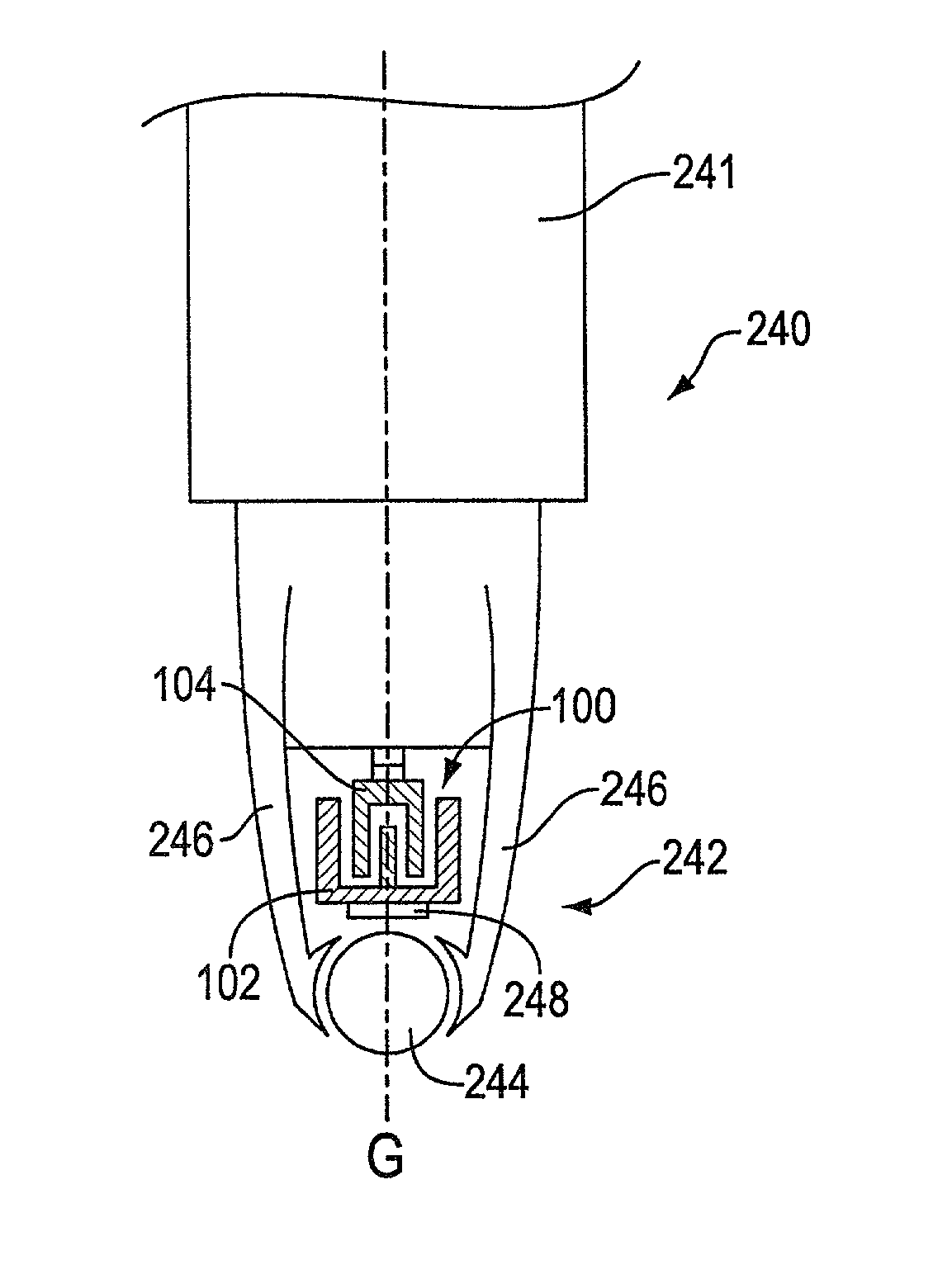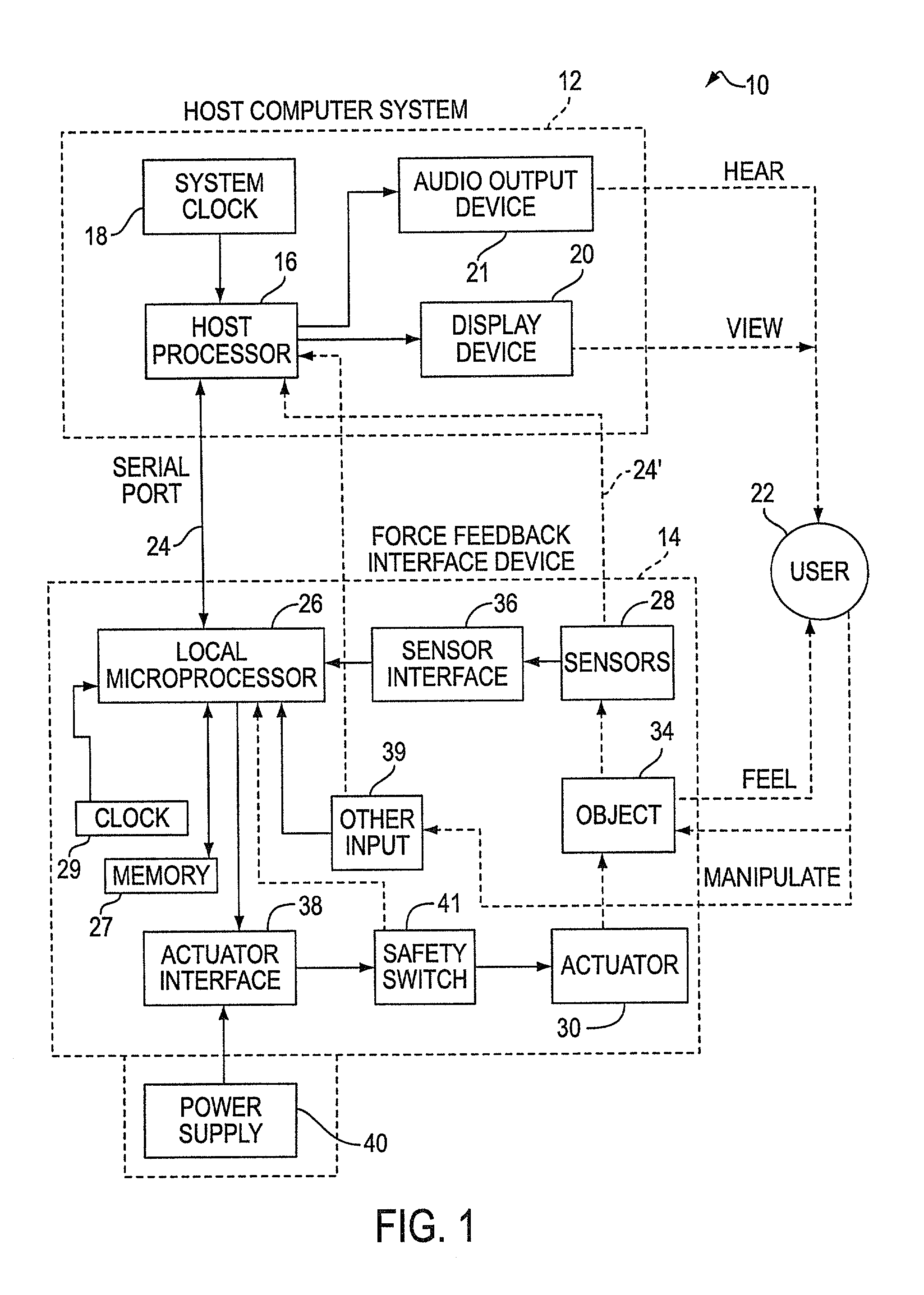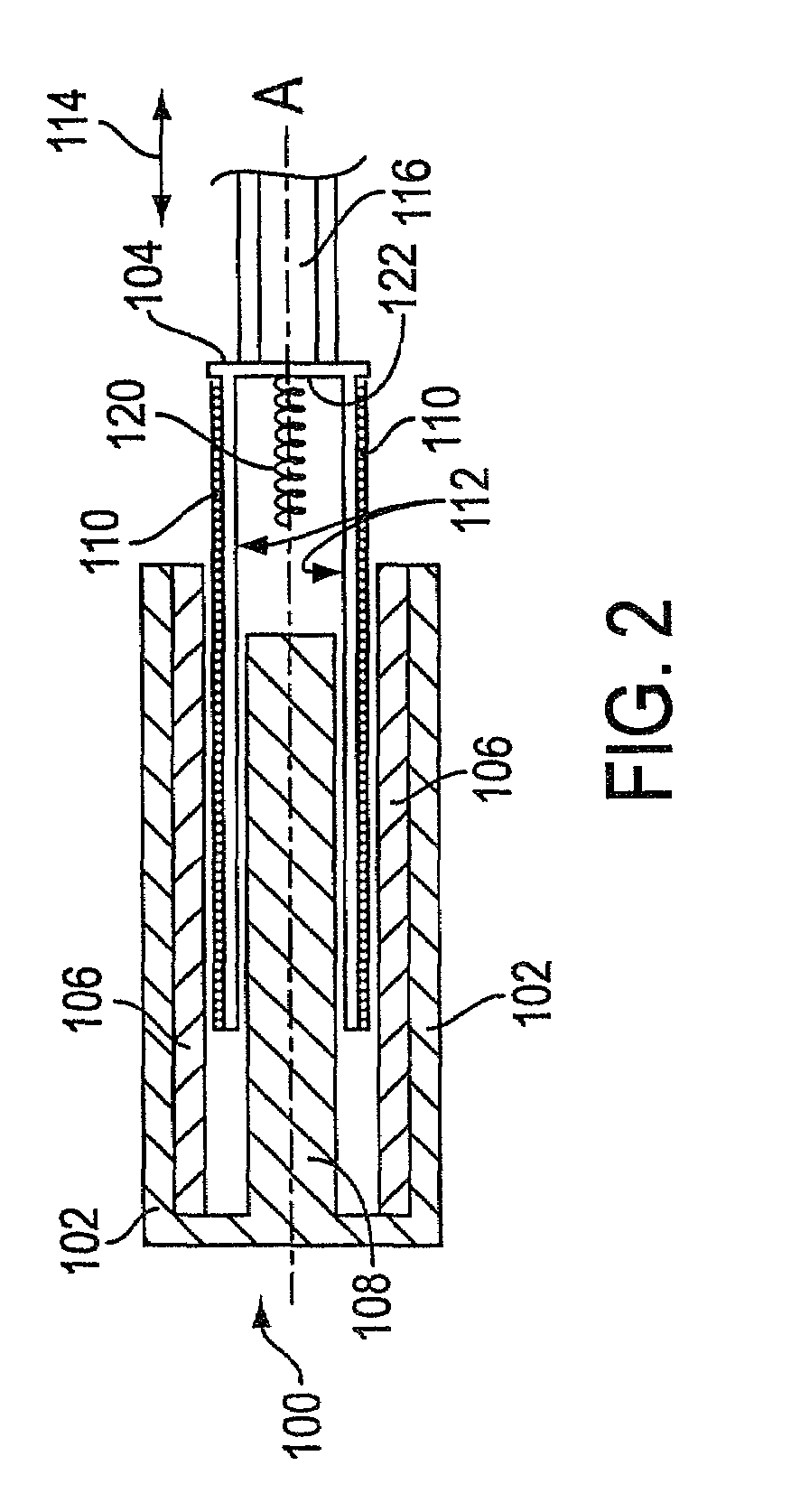Haptic feedback stylus and other devices
a technology of haptic feedback and stylus, which is applied in the field of interface devices, can solve the problems of high manufacturing cost of such devices, and high cost of devices for consumers, and achieve the effect of simple and lower cost force feedback
- Summary
- Abstract
- Description
- Claims
- Application Information
AI Technical Summary
Benefits of technology
Problems solved by technology
Method used
Image
Examples
embodiment 150
[0060]The mouse embodiment 150 allows the user to interact with a graphical environment through the sense of feel. The output of forces can be coordinated with events occurring in the graphical environment. For example, when the user moves a cursor over a window in a graphical user interface, a jolt can be output by actuator 100 as the cursor moves over a boundary of the window. Furthermore, the magnitude of output forces can depend on the event in the graphical environment. For example, the force jolt can be a different magnitude of force depending on the type of graphical object encountered by the cursor. For example, a jolts of higher magnitude can be output when the cursor moves over windows, while jolts of lower magnitude can be output when the cursor moves over icons. The magnitude of the jolts can also depend on other characteristics of graphical objects, such as an active window as distinguished a background window, file folder icons of different priorities designated by the...
embodiment 240
[0068]When the user wishes to use the stylus normally, the user moves the tip of the pen across a surface. Since the ball 244 is the only portion of the tip contacting the surface in typical operation, this motion causes the ball 244 to roll to allow a fluid motion of the stylus over the surface. The contact of the ball with a tablet surface can be sensed by a sensor in the tablet, for example. When a force sensation is to be output, the actuator 100 is controlled to extend, i.e. the housing 102 and brake pad 248 are commanded to move and contact the ball 244. This causes a resistance to the motion of the ball and can cause the ball to stop rolling. If the actuator 100 is commanded to quickly move the brake pad 248 against the ball 244 with maximum force, a jolt-like effect is felt by the user. If the brake pad is more gradually contacted with the ball, the user may feel an increasing resistance or damping-like effect. If the actuator is commanded to pulse so that the brake pad 248 ...
PUM
 Login to View More
Login to View More Abstract
Description
Claims
Application Information
 Login to View More
Login to View More - R&D
- Intellectual Property
- Life Sciences
- Materials
- Tech Scout
- Unparalleled Data Quality
- Higher Quality Content
- 60% Fewer Hallucinations
Browse by: Latest US Patents, China's latest patents, Technical Efficacy Thesaurus, Application Domain, Technology Topic, Popular Technical Reports.
© 2025 PatSnap. All rights reserved.Legal|Privacy policy|Modern Slavery Act Transparency Statement|Sitemap|About US| Contact US: help@patsnap.com



